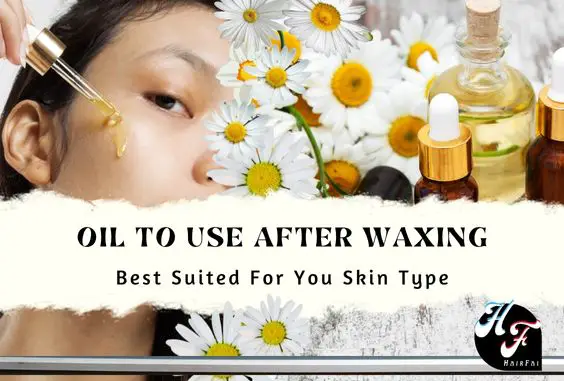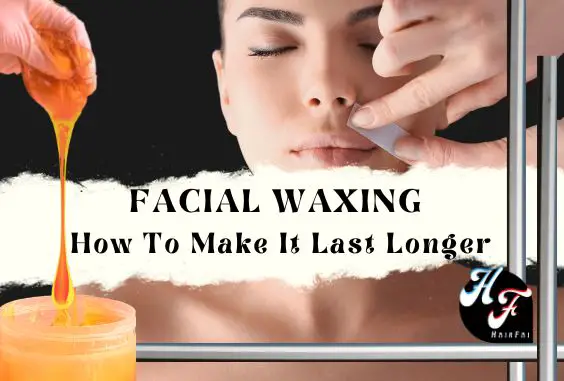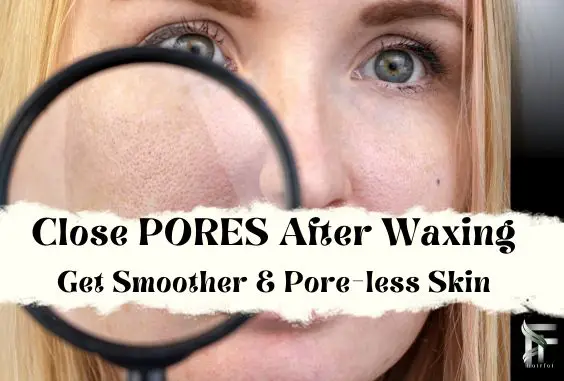Best Oils To Use After Waxing- How To Apply & Benefits

When it comes to waxing, the aftercare that follows is one of the main important aspects. It helps to provide us with longer, smoother, and softer skin as result, whilst restoring our skin moisture and health.
Mostly what happens at different salons, we are either fed with very different or sometimes little to no information. So here we will be discussing oiling after waxing and why it’s an aftercare we must not ignore.
Can you apply oil after waxing
Applying the oil is one of the most effective ways to lock in moisture and protect your now opened pores from outside impurities. It is the perfect sealant for protecting our skin and at the same time nourishes and gives your skin that glow. Citation
But at the same time, it’s just not that easy. We Just can’t randomly select any oil and apply it to our face. We need to consider things like; what type of oil it is? Is it for your skin type? Does it have absorbing properties? and so on. (See below on how to correctly use oil)
Following oils can be used on any part of the body when waxed. However, only apply oil to the waxed area after 2-3 days after, or as recommended by your beautician.
Also, see how to correctly Moisturize after waxing: What to Apply After Waxing- Treat & Moisturize Dry Skin
What Are The best oils to use after waxing
- Coconut Oil– Work as a perfect Sealant
- Tea Tree Oil– Antimicrobial
- Jojoba Oil – Extra Dry skin
- Almond Oil – Combination skin type
- Argan Oil- Oily Skin
- Lavender Oil – Calms skin
Suffer from Itchiness after waxing? Then click here to see what Causes it, how to Prevention & even Treat it
1 – Coconut Oil After Waxing
Coconut oil comes with a lot of nutritional value, health benefits, and anti-bacterial properties which can help our now waxed skin. In its refined state, it can be applied to any part of our body even our face. Refined coconut oil benefits our waxed skin because it’s;
- Perfect for all skin types. however, you are to still have a patch test done.
- Returns moisture to our skin, because it works as a sealant meaning it can lock in the moisture to our fragile skin.
- Protects our now exposed skin against bacteria, because of the anti-bacterial properties it possesses.
- Refined light coconut oil works as a non-comedogenic sealant, creating a safe and thin barrier between our now fragile skin from outside dust and impurities.
- Assist in the rehydrating process when applied to a clean wet face (preferable after wash).
- Healing abilities to heal all the tiny bruises, rip, and tears after waxing.
How to Use Coconut Oil When Waxing
After cleansing your face/ area waxed, you now apply your coconut oil over wet skin. This will seal in the water particles for the skin to absorb. It is one of the most effective ways to restore water content to the skin after waxing. And
To restore the moisture to your skin that was lost during the waxing procedure, you just simply apply moisturizer to your face (dry skin) and then apply your sealant.
See The Nutiva Coconut oil, readily available on Amazon, Click here to see the price.
Click here to see how to use coconut oil for Eyebrows and hair.
2 – Tea Tree Oil For Waxing
Tea Tree oil is an essential oil that has several uses especially for keeping your skin healthy and its protective antimicrobial properties. However, this oil is;
- Not for everyone, If you have sensitive skin, you should patch test before using tea tree oil, as it’s also an irritant and allergen.
- Perfect for persons who are easily prone to acne, because it kills bacteria and can also minimize bacteria resistance.
- Tea tree oil can be used to treat and disinfect minor cuts and bruises caused by waxing the skin. It kills bacteria that can cause infection the open wounds
- Soothe skin inflammation, by getting rid of dermatitis it may relieve you of inflamed pores.
Related Articles
Folliculitis After Laser Hair Removal -Treated & Explained
Coconut Oil After Shaving – Benefits & How to Use Correctly
Deodorant After Laser Hair Removal – Potential Dangers and Risks
Deodorant After Waxing – Possible Dangers
What to Do After Waxing Underarms- Aftercare Guide & Tips
Benefits & Disadvantages of Waxing Underarm Vs Other Methods
What to know before Threading -Disadvantages & Benefits Of Threading Hair
How to Use Tea Tree Oil After Waxing
- Mix Tea Tree Oil with any carrier oil, and apply a gentle amount evenly to the waxed area. Then have it sit for 5 – 10 minutes.
- After you gently wash it off. (It is used as a rinse-off, because of its high concentration chemical in this oil it’s risky to just leave it, sitting on your waxed and fragile skin).
It is known for being antimicrobial and anti-inflammatory, and the only plant-based ingredient that has been studied to treat both minor and active skin infections. which makes it perfect to prevent acne and inflamed pores after waxing. Citation
Click here and see the price of a bottle of Tea Tree Oil, Available right on Amazon.
3 – Jojoba Oil After Waxing
Jojoba Oil is produced from the nuts of the jojoba plant. It is a humectant ingredient that is basically like liquid wax. It has anti-inflammatory properties, Vitamin E and B-complex. See below how it actually benefits us:
- Jojoba oil can be used on any skin type because it mimics the oil our skin produces.
- It has a low comedogenic rating, making it more suited for waxed skin.
- Good for calming irritated skin, because it is light and effective enough to subside the temporary redness and irritation after waxing.
- Because of its vitamins, it can help in repairing the damages caused after waxing, and soothes sunburns if any.
- It is perfect for rehydrating after waxing. This is because when applied, the jojoba oil pulls water particles to the epidermis of the skin.
- It is an anti-inflammatory agent meaning it can protect the skin from bacteria seeping into open pores.
- Hypoallergenic and because of its waxy nature, it can create a soothing seal on the surface of your skin, protecting it from outside impurities.
- It may also fight off bacteria on the skin, due to its high content of iodine.
4 – Almond oil after waxing
Almond oil has been used for centuries to treat dry skin, even conditions like; eczema and psoriasis. It helps cure acne and calms the skin from the waxing trauma. also, it contains fatty acids that can dissolve excess oil on the skin.
Simply apply oil on a wet or moisturized face after washing, and have it sit. (Avoid activities that can lead to excessive sweating).
See here for Pure Almond Oil available right on Amazon. Click here to see the Price of one.
Related Articles
Folliculitis After Waxing- How To Treat & Prevent
Does Eyebrow Threading Hurt- How To Prep & What To Expect
Pimples & Bumps After Threading- How to Treat & Prevent
Threading Hair Aftercare- What to Do & Apply to Soothe Skin
Does Face Waxing Cause Acne, Bumps, & Larger Pores
Eyebrow Laser Hair Removal- Risk, Precare, Aftercare & Cost
Wrinkles, Loose & Saggy Skin After Facial Wax- Actual Truth
Disadvantages & Benefits of Waxing – What You Need to Know
5 – Argan Oil After Waxing
Argan oil has anti-sebum effects because it is rich in linoleic acid and oleic acid which help to reduce the oil production on the skin. Simply by regulating the sebum oil released, making it the perfect oil for oily skin. What happens when using this oil;
- This oil effectively regulates our sebum which reduces the excessive release of natural oils.
- Reduces the risk of natural oils clogging our now open pores after waxing.
- It treats acne and promotes smoother, calmer-looking skin.
How to use Argan Oil
Simply apply argan oil on the wet/damp face or waxed area after washing, and have it sit as a thin sealant for rehydrating your skin.
Or you may also apply it directly over the skin to help with its oiliness.
6 – Lavender Oil After Waxing
Plant extracts have long been known to help relax the body and soothe the skin. This oil may also help balance out moisture levels in your skin and has even been used for centuries in aromatherapy for its calming and soothing properties.
Simply mix Lavender oil with any carrier oil and apply over wet or moisturized skin and relax (stay away from activities that lead to excessive sweating).
Click here on Amazon, To see Natural Riches Pure Lavender Oil which is best suited for your skin. OR
Vitamin E Oil After Waxing
Is vitamin E oil after waxing safe? Well, we do not encourage the use of Vitamin E Oil on waxed skin. According to studies slathering vitamin E oil on your skin can actually cause dermatitis and even worsen the appearance of post-hyperpigmentation after waxing. Citation
How to Correctly use oil
Many misunderstood the purpose of oil and what oil actually is. And because of this, we tend to use it the wrong way. Hence many of us don’t get the best out of it. So here is how to correctly oil your skin after waxing;
1 – Wait until 2-3 days after waxing, before applying any oil (The area waxed influence the time for oiling).
2 – Get a patch test done before using any oil, so as to identify any adverse reaction.
3 – Cleanse your face with a mild facewash (preferably one that won’t cause irritation to your exposed skin).
4 – Apply a few drops of oil onto the Wet face (the waxed area).
OR
Pat skin Dry then apply a non-irritant moisturizer, followed by your oil.
5 – After that, you should keep out of the sun and avoid activities to may cause excessive sweating. So you can give your skin time to relax.
Mistakes when oiling face after waxing
When used wrongfully, they can cause; breakouts and even prolong the post-trauma caused by waxing. Now see what to avoid when applying oil after waxing:
- Never apply the oil right after waxing, wait until 2-3 days after waxing.
- Applying oil before having a patch test done, may cause adverse reactions
- Applying oil directly on dry skin will only lock out moisture.
- Applying too much oil will just clog your pores and lead to inflamed pores.
- Know which oil works better for your skin type (more on this above).
- Using oils based on referrals. what may work for your friend may not be best for your skin.
- Not Hydrating your skin before using oil, will just result in dry skin.
- Using rancid oils, oils that have been exposed to sunlight and air are considered spoiled. Applying this, will lead to having dangerous adverse reactions.
See more on; What To Do After Face Waxing – Aftercare Tips & Guide
DIY post wax oil
For those who just prefer making other own Oils at home. Then click the video for a step-by-step guide on how to go about preparing it.
Related Articles
Painless Waxing-Use Numbing Cream, Spray & DIY Remedies
Tweezing Vs Waxing- Which Is One Better
What to Apply After Waxing- Treat & Moisturize Dry Skin
Best Eyebrow Threading Machine- Pros, Cons & How to Use
Threading Vs Waxing Which Is Best For Face & Upper Lips
Threading Upper lip Hair- Cost, Pros & Cons, How to DIY
Waxing Upper Lip- Pros & Cons, Cost, How to DIY, Aftercare
Allergic & Histamine Reaction to Waxing -Treat & Prevent
Itchy After Waxing: Causes, Prevention & How to Treat it
What To Do After Face Waxing – Aftercare Tips & Guide
How Often Can You Do a Face Wax- Tips to Make it Last Longer






